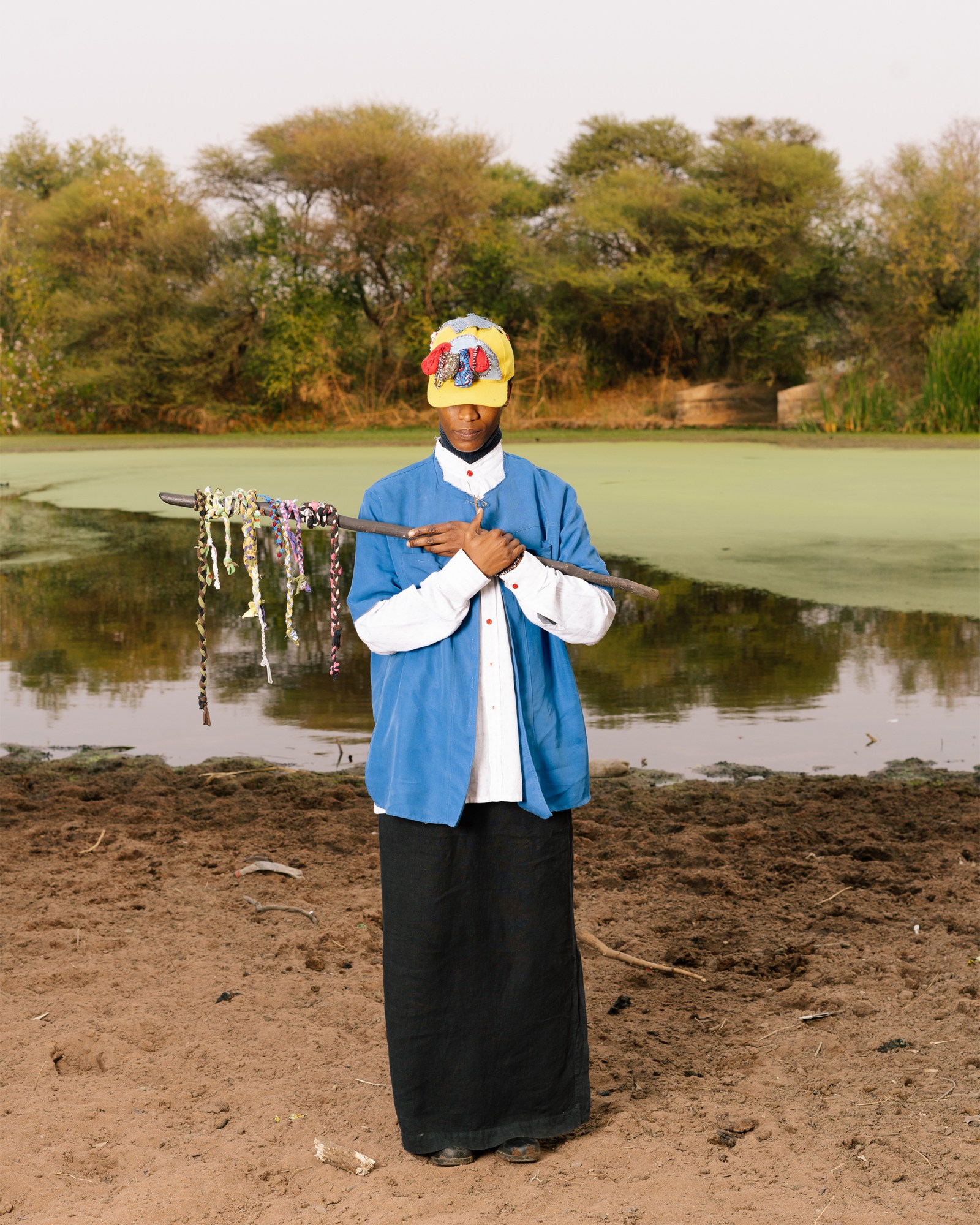Botswana hasn’t taken part in the Venice Biennale, colloquially touted as the Olympics of the art world, in the international exhibition’s 129-year history. So who exactly are the collective formerly known as the Botswana Pavilion?
TBP Artist Collective – comprised of photographer Thero Makepe, multidisciplinary artist Kim Karabo Makin, painter Thebe Phetogo, new media artist LegakwanaLeo Makgekgenene and Sade Shoalane (also known as Rrangwane), whose work combines found objects and performance art – are a group of contemporary artists from Botswana. The group’s former name, a subversive twist on the ‘Pavilions’ through which countries partake in the Biennale every year, was designed as a sly dig at the art world’s Eurocentric snobbery. Ironically, it was the archaic rules around the use of that title that would force them to change it.
The seeds of the group’s formation were in 2015, when the friends (with the exception of Shoalane, who joined later) were all studying at the University of Cape Town. It was in March of that year that the activist Chumani Maxwele threw human excrement on the statue of the British imperialist and colonialist Cecil John Rhodes on campus: part of an activist call for the statue’s removal and a decolonised curriculum at the university, one historically formed by white academics. Maxwele’s actions that day would catalyse the #RhodesMustFall movement that swept universities across South Africa, spreading as far afield as the United Kingdom.

For the individual members of the collective, the #RhodesMustFall movement became a reckoning moment, with the widespread push for social change becoming an imperative part in their creative practice. Within that period of post-apartheid disillusionment, the collective turned to their country’s own national identity too, interrogating Botswana’s history, its underrepresented artistic heritage and its relationship with South Africa.
Rather than making work together, the collective create individually, with each member riffing on the idea of national collective memory, folk stories as a means of communication, and belonging. The means through which they present it vary: Makepe, who photographed the collective for this story, places family members in spaces formerly used to incarcerate political prisoners, creating surrealist documentary portraiture. Makgekgenene’s photomontage work brings Setswana mythology into the present day in an attempt to re-examine Botswana’s past.
Art collectives have a complex history in Botswana. In 1977, the Medu Art Ensemble was founded in the capital city Gaborone by a group of exiled South African “cultural workers” (they preferred the term over “artist”, which felt individualistic and bourgeois.) The group hosted exhibitions, concerts, theatre productions and workshops, aimed at raising awareness about South Africa’s liberation movement. On 14 June 1985, Medu disbanded after a tragic raid by the South African Defence Force killed 12 people.
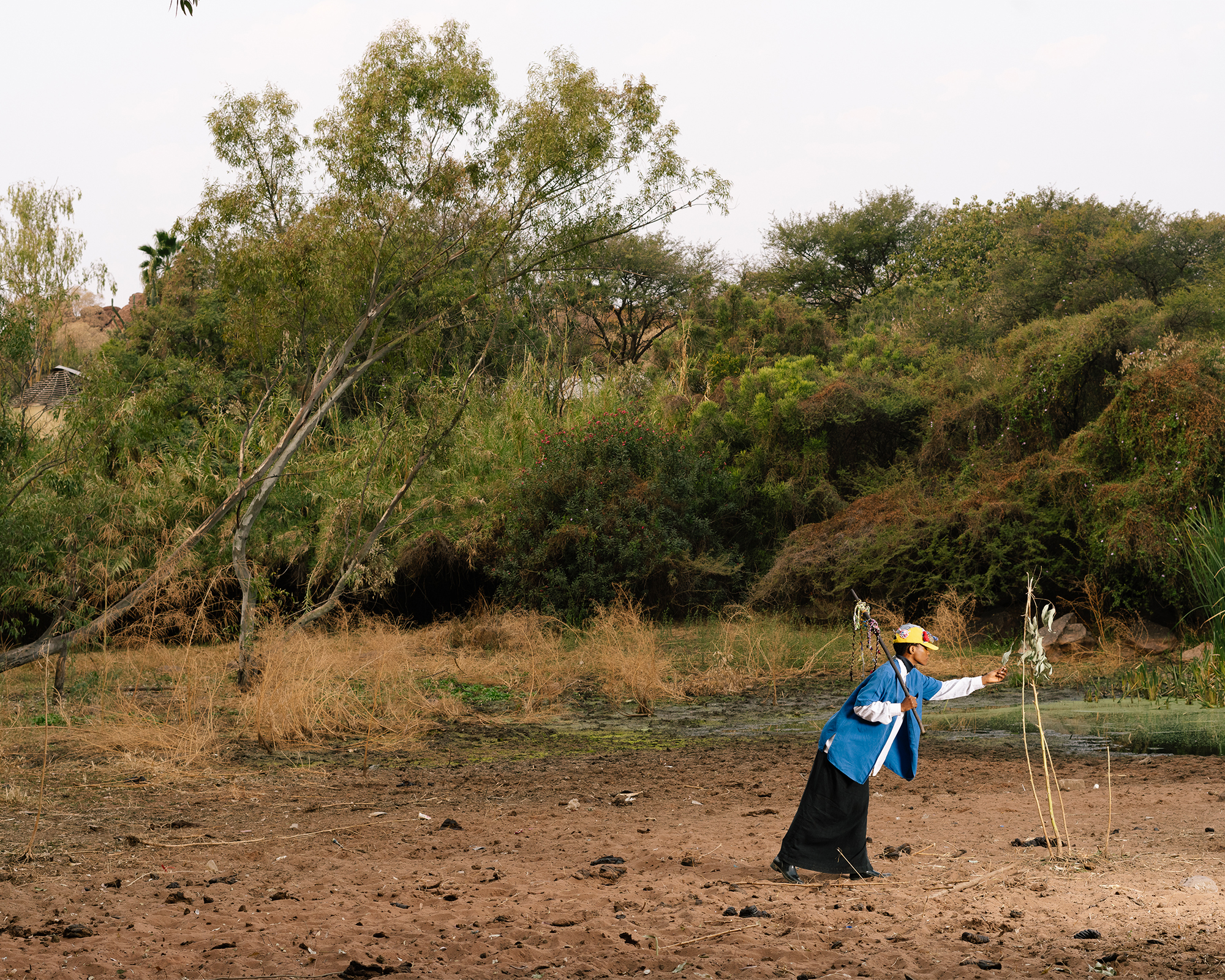
Today, the TBP collective operates as a support network as much as a creative endeavour for those who are a part of it. Having worked or studied elsewhere, the collective have since returned to Botswana. For this photo story, Makepe shot what he calls “performative images” of the group in the landscape of their home country. “[They] combine characters that have appeared in our individual art practices before,” he says. “A thread that binds our practices is our interest in myths and lesser-known histories. Narratively, this series of images is about our collective journey as artists.”
Later, they gathered to speak, both in English and in (translated) moments of Setswana, about African art and representation, their unique hustle and the ties between Botswana’s government today and the iconic Medu Art Ensemble.
What sparked your impulse to want to represent Botswana within the art world?
Kim Karabo Makin (KKM) The very first exhibition that we did at Gallery Momo in Cape Town in 2019 was titled The Botswana Pavilion: No return. It was kind of a joke, because the show was going on at the same time as the Venice Biennale. For the second show at the National Art Gallery in Gaborone, we collaborated with [Rrangwane] and a couple of other artists that were practising locally. Initially our story was quite removed from our actual context… in a way, [we were] yearning for home.
“Isn’t it ironic that I had to leave Botswana to find out that Botswana once had a flourishing art scene?”
Kim Karabo Makin
LegakwanaLeo Makgekgenene (LLM): Most of us are now stationed back home, [and] part of [our] investigation has been looking at how Botswana characterises itself creatively and how that could fit into the bigger arts sphere. The way Botswanans make work and exist creatively doesn’t necessarily fit into the ’White Cube [Gallery]‘ mode. [That] is in part some of the learning that we got in Cape Town, and some of the learning that we’ve had to adjust to coming back. Now we are back, [we’re] thinking about whether to participate in continental Biennales specifically.
Thero Makepe (TM): Yeah, I agree with what Leo was saying. [We should be] decentring European spaces and focusing more on pan-African spaces.
You practice professionally all over the world. Between a local and global art audience, which is more important to you?
KKM: It would still be an honour to be able to represent ourselves as a country at the Venice Biennale. At the same time, I’d really love to see us at Dak‘Art Biennial in Dakar, Senegal or Bamako (Encounters – African Biennale of Photography). [Venice] was initially part of the impetus, but it’s not necessarily the main goal or focus right now.
TM: The success of our group is only as good as the people around us. That includes our contemporaries that are making amazing art – not only within Botswana, but people across the continent and the diaspora at large.
KKM: We have also had a conversation around Tswana creative identity more broadly. Not just Batswana artists practising in Botswana, but what it means to be a Motswana artist in the diaspora.
Rrangwane (R): Botswana is generally known to be a docile [country]. We are docile people, so creatively it is not common to see people [going] against the grain. Not that TBP is necessarily rebelling in the art space, but we definitely are bringing a different angle of what is possible as a Motswana artist in Botswana; it is not just paintings of wildlife.
TM: If [white European Western institutions] come calling, we start a dialogue and they have to agree with our ethics. But European institutions are not the be all and end all. The conversations are much more exciting in Botswana. It’s almost like an empty canvas for us to do things.
LLM: What has been interesting is playing with that empty space. The empty canvas [stems from] a lack of access to certain things, but what it kind of does is push us back to the foundational creative space. We begin to form these slightly off-kilter versions of things we‘ve never seen before.
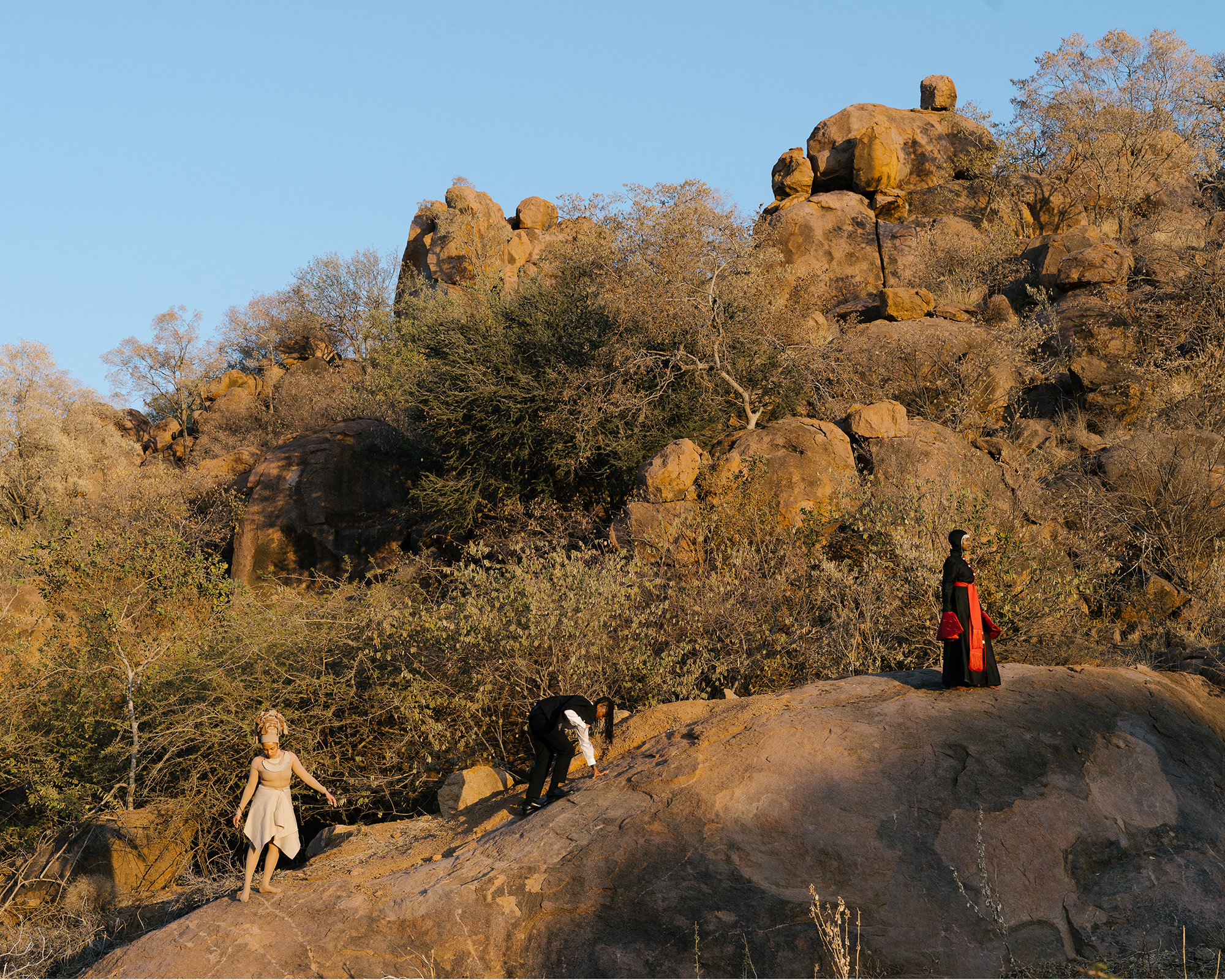
What possibilities come out of that creative hustling?
KKM: Creating a platform with the little that we have, or bringing together our knowledge trying to build a space to have these sorts of conversations. Beyond our roles as artists, we also need to be creative entrepreneurs. That’s something I’ve really been reckoning with lately.
TM: I think African artists in general have to have multiple streams of income. I mean, just yesterday Kim and I were at Thapong Visual Arts Centre, the oldest running art centre in Gaborone, and they were hosting a resident from Zimbabwe. He sells his own paints, he even sells mushrooms. So it’s definitely not just a Botswana or a Motswana artist issue.
What does the way the government shut down Medu Art Ensemble say about how Botswana’s political elite see artmaking?
R: The violent manner in which Medu Art Ensemble was disbanded deeply scarred the creative consciousness of Botswana. Our current president was in the Medu Art Ensemble, and a couple of other people who are still active right now in the government run art institutions – but they are not for the actual ethics of what Medu Art Ensemble stood for. They are all for the optics.
KKM: Medu is often celebrated as a moment in South Africa‘s art history. And of course, that‘s because of the way history is conceptualised in the postcolonial sense, which quite often has to do with a struggle for freedom or independence. The story of Medu has been lost in the grand narrative of Botswana because it does not directly link to our story of independence. But I don’t like that… I believe that Medu Art Ensemble was founded in Botswana for a reason and that is something that needs to be explored more.
Some of the PTSD lingering from that violence means that the national government started to distance themselves from artists and cultural workers, because the apartheid government alleged that they were terrorists. The national perspective since then has been to keep artists at a safe distance, even at times manifesting as a form of censorship.
TM: When the rest of the continent was working towards continental solidarity in the 60s and 70s, Botswana was building a centrist social democratic society at best. It‘s been like that ever since. That‘s the environment in which our parents were born into and grew up in, and then that was passed down to us. But I do think there is now a realisation that this isn’t enough.
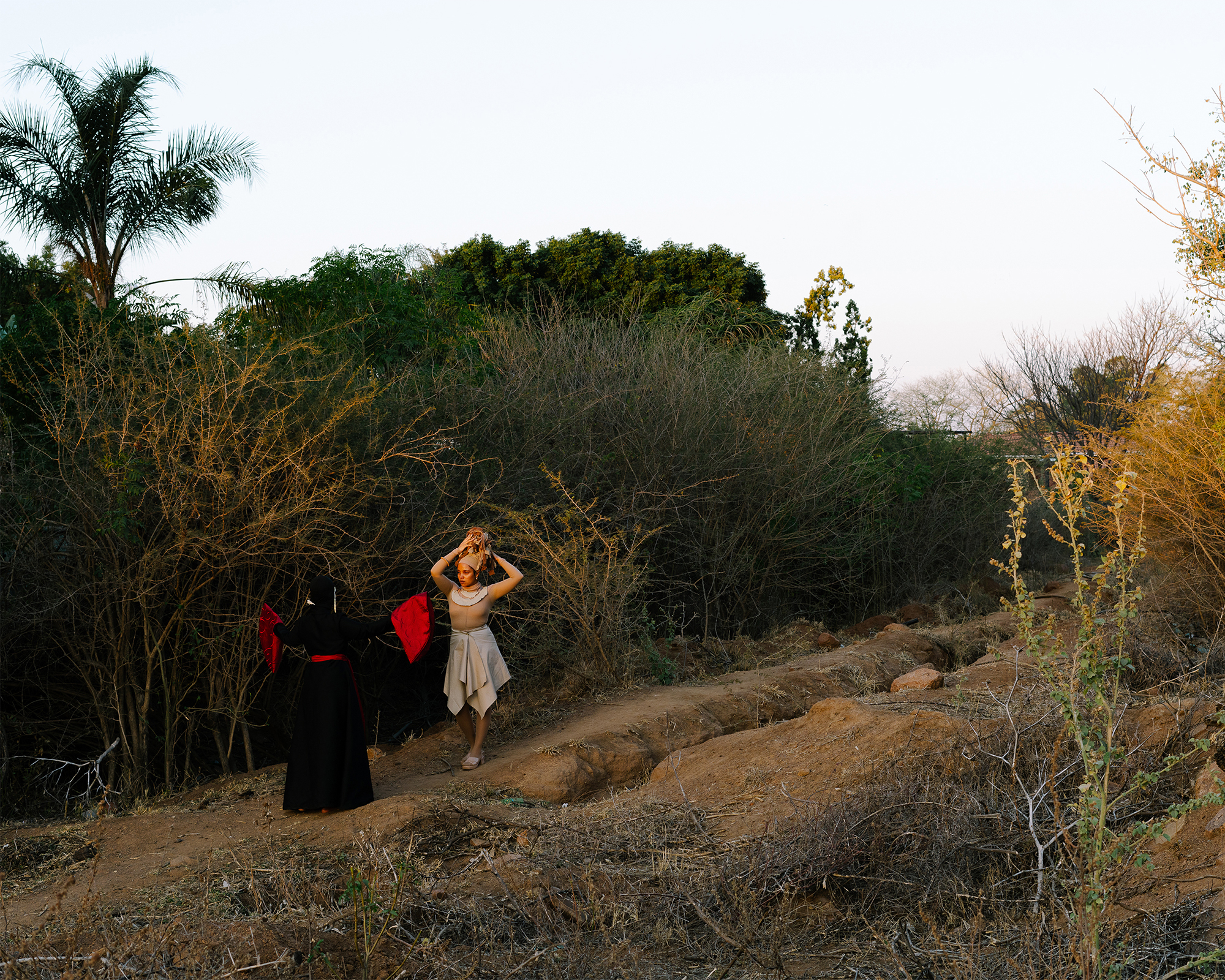
I know folklore and mythology permeates most of the art you all make – disrupting collective and national memory.
LLM: The dominant understanding of how Botswana got independence is that we politely asked for it from Britain. Using that as a key part of the national narrative ties in with what Thero was saying that it implicates it into our national identity and how we are perceived as being submissive in order for us to reach a common goal. You could say that it’s because of colonialism and how we lost some of our cultural signifiers, that orality through its ephemeral nature prevailed. So inside our oral traditions, folklore and even gossip culture, stories and storytelling become something that characterises us.
TM: I think Leo introduced something that’s very important to understanding the way knowledge is disseminated in Botswana: it’s gossipy, it’s underneath the table. I work mainly within the realm of photography, so that for me is exciting: how do I hear someone’s story, whether it’s in my family or outside of my family, and create that visual tableau? How do I create these complex things that have so many messages baked into it but it’s still visually pleasing and it still invites somebody to pick it apart?
R: I don’t really like mythmaking as a word but I have always been a fictive worldbuilder. And it definitely has everything to do with digging into ancestral memory and archives.
KKM: Initially when I found out about Medu, I was quite disappointed [I hadn’t heard about it sooner.] Isn’t it quite ironic that I had to leave Botswana to find out that Botswana actually once had a flourishing art scene? This is why sound became such an important part of my work because I started to challenge my thinking, asking myself: to what extent does Botswana remember differently? Often it won’t be found in written down records.
“The individual artist is a Western construct. It’s very white. It’s very colonial.”
thero makepe
What is important about cultivating your art collective, especially in an industry that fawns over the significance of the individual artist?
KKM: I think because there isn’t much visibility of artists from Botswana, there’s also an aspect of always feeling alone and unsupported by a community. So I would say that starting this collective and being a part of it has been quite inspirational and motivating – prioritising the collective over the individual.
TM: The individual artist is a Western construct. It’s very white. It’s very colonial. Collectivity on the other hand has pan-African solidarity as a framework. Although without romanticising things, by the time we formalised our collective in 2019, most of the collectives we looked up to were defunct. So at the very beginning that was one of my concerns: young artists who don’t have representation coming together, exhibiting frequently, doing pop up exhibitions, activating spaces. That’s a moment that activates the community and people start having exciting robust conversations and then, eventually, the collective collapses.
We all knew that if we’re going to come together and do this thing, we’d always have these moments of checking in. This is because we understand the mission beyond ourselves. Our goal was never to get individual representation from what we do as a collective. It was never just for us as individuals to get to go to Venice or to Dak’Art to be “the next emerging artists to look out for.” It’s about creating a sustainable path in an art ecosystem for others, where we come from.
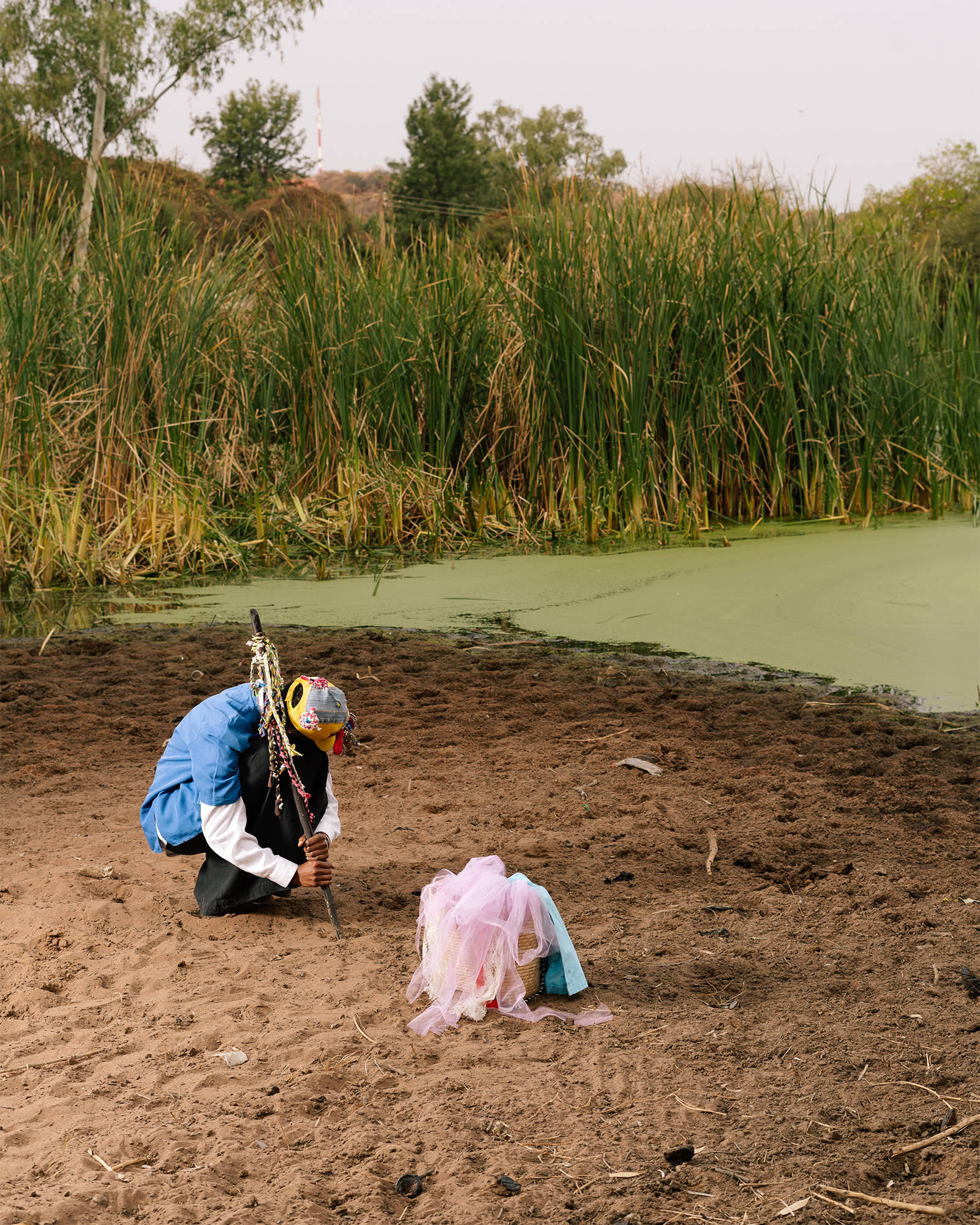
Credits
Writer: Amogelang Maledu
Photography: Thero Makepe
